45 daily value on food labels
Percent Daily Value On Food Label - LabelCal What are Percent Daily Values on Food Labels? Percent daily values represent the percentage of the recommended daily intake a single serving of food contains. For instance, if the percent daily value for saturated fat is 45%, that means you are getting almost half of the saturated fat that the FDA recommends you consume in one day. What are the daily values on food labels based on? - Short-Facts The % Daily Value (%DV) is the percentage of the Daily Value for each nutrient in a serving of the food. The Daily Values are reference amounts (expressed in grams, milligrams, or micrograms) of nutrients to consume or not to exceed each day. The %DV shows how much a nutrient in a serving of a food contributes to a total daily diet.
Daily values - Nutritional Values For Common Foods And Products Daily values are based on a 2000 calorie a day diet. Recommended daily intake of essential aminoacids is provided for 180 lbs person. Actual daily nutrient requirements might be different based on your age, gender, level of physical activity, medical history and other factors.
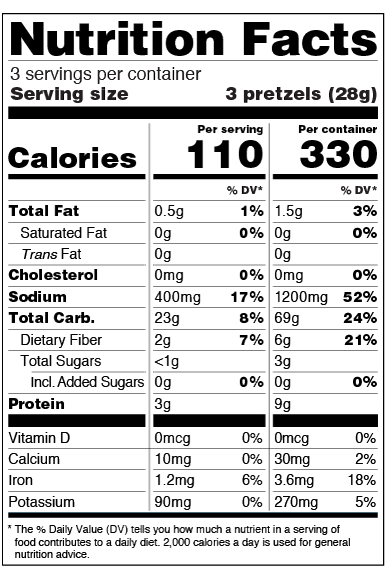
Daily value on food labels
Nutrition Labels 101: What does percentage of daily value mean? Confused about all those percentages found on nutrition food labels? Nutritionist Greg Salgueiro from the Women's Medicine Collaborative in Providence, RI ex... What Does "% Daily Value" Mean on a Food or Supplement Label? The U.S. Food and Drug Administration (FDA) recommends 400 IU, so that's what the Daily Value is set at. The Institute of Medicine recommends getting between 600 and 800 IU per day (as does Health Canada ). Dr. Oz recommends 1,000 IU. Dr. Andrew Weil recommends 2,000 IU. The Linus Pauling Institute recommends 2,000 IU. Daily Values | Dietary Supplement Label Database (DSLD) | NIH Office of ... Daily Value on the New Nutrition and Supplement Facts Labels Nutrient Unit Conversion Factors The Daily Values (DVs) that are used to declare vitamins and minerals on labels have been updated in the new regulations. Also updated are the units to express the amounts of the fat-soluble vitamins A, D and E, and folate.
Daily value on food labels. Daily Value and Percent Daily Value: Changes on the New Nutrition and ... Daily value and percent daily value and the new nutrition facts label Keywords: nutrition facts label Created Date: 4/3/2020 3:03:45 PM ... › food › new-nutrition-facts-labelDaily Value on the New Nutrition and Supplement Facts Labels (3) The Daily Value decrease for vitamin E applies for foods/supplements containing the natural form of vitamin E, but not for the synthetic form. For foods/supplements containing only the... › food › food-labeling-nutritionChanges to the Nutrition Facts Label | FDA - U.S. Food and ... Mar 07, 2022 · It will now read: “*The % Daily Value tells you how much a nutrient in a serving of food contributes to a daily diet. 2,000 calories a day is used for general nutrition advice.” 13. I heard ... FDA Rounding Rules for Your Food Label - LabelCalc A statement that says something to the effect of, "less than 2% of the Daily Value for X nutrient." Use an asterisk to denote this underneath and place the statement in the footnote section of the nutrition facts panel. ... As of 2022, the FDA made significant changes to the nutrition facts label that all brands must adhere to. If companies ...
The Lows and Highs of Percent Daily Value on the Label 5% DV or less of a nutrient per serving is considered low. 20% DV or more of a nutrient per serving is considered high. More often, choose foods that are: Higher in dietary fiber, vitamin D,... Table of Daily Values - Canada.ca This document is a two-part table that sets out the recommended amounts of nutrients (the daily value) for specific age groups. These are the reference points upon which the % daily value in the nutrition facts table are based. Part 1 of the table sets out the daily values for macronutrients and sodium for two age groups. › percent-daily-valuePercent daily value - Canada.ca dividing the amount of a nutrient in a serving size by its daily value, then multiplying that number by 100 For example, a food product has 3 mg of iron. The daily value for iron is 14 mg. This means that the % DV for iron would be 21%. If you would like to do your own calculation, use the equation below to help you. (3 mg ÷ 14 mg) × 100 = 21% DV Nutrition Facts Food Label (Reading Labels, Consumer Math, Daily Value ... This Nutrition Facts Labels Unit teaches students how to read Food Nutrition Facts Labels. It discusses important key terms like Calories, Daily Value, Ingredients, and Allergens. It asks students questions that requires them to think critically and apply math skills while reading a Nutrition Facts Label. There is an example page that shows them how to solve the problems that require them to ...
How to Understand and Use the Nutrition Facts Label | FDA The % Daily Value (%DV) is the percentage of the Daily Value for each nutrient in a serving of the food. The Daily Values are reference amounts (expressed in grams, milligrams, or... Daily Value on the New Nutrition Facts Label - HealthSurgeon If a nutrient's DV is 300 micrograms (mcg), and a packaged food has 30 mcg per serving, then the %DV would be 10%. You would get 10% of your daily nutrient needs if you only ate one portion of the product. You could also consume other foods and supplements to get the remaining 90%. Understanding Percent Daily Value on the new Nutrition Facts label How to Calculate % of Daily Value on Food Labels | livestrong Step 1 Find the nutrient amount on the food label. Step 2 Look up the total daily recommended amount in the USDA Dietary Guidelines. Step 3 Divide the nutrient amount by the total daily recommended value. Step 4 Multiply by 100. Things You'll Need United States Department of Agriculture (USDA) Dietary Guidelines Food label Calculator Tip Food Labels | CDC - Centers for Disease Control and Prevention In general, eat more foods that are higher in vitamins, minerals (such as calcium and iron), and fiber. Eat fewer foods that are higher in added sugars, saturated fat, and sodium (salt), and avoid trans fat. Keep in mind that the % Daily Value of each nutrient, such as total fat of 10% in the example below, is based on eating 2,000 calories a day.
Added Sugars on the New Nutrition Facts Label | FDA The Dietary Guidelines for Americans recommends limiting calories from added sugars to less than 10 percent of total calories per day. For example, if you consume a 2,000 calorie daily diet, that ...
› patientsCalcium and Vitamin D - Bone Health & Osteoporosis Foundation Check the food label to see if vitamin D has been added to a particular product. One eight-ounce serving of milk usually has 25% of the daily value (DV) of vitamin D. The DV is based on a total daily intake of 400 IU of vitamin D. So, a serving of milk with 25% of the DV of vitamin D contains 100 IU.
Daily Values | Dietary Supplement Label Database (DSLD) | NIH Office of ... Daily Value on the New Nutrition and Supplement Facts Labels Nutrient Unit Conversion Factors The Daily Values (DVs) that are used to declare vitamins and minerals on labels have been updated in the new regulations. Also updated are the units to express the amounts of the fat-soluble vitamins A, D and E, and folate.
What Does "% Daily Value" Mean on a Food or Supplement Label? The U.S. Food and Drug Administration (FDA) recommends 400 IU, so that's what the Daily Value is set at. The Institute of Medicine recommends getting between 600 and 800 IU per day (as does Health Canada ). Dr. Oz recommends 1,000 IU. Dr. Andrew Weil recommends 2,000 IU. The Linus Pauling Institute recommends 2,000 IU.
Nutrition Labels 101: What does percentage of daily value mean? Confused about all those percentages found on nutrition food labels? Nutritionist Greg Salgueiro from the Women's Medicine Collaborative in Providence, RI ex...
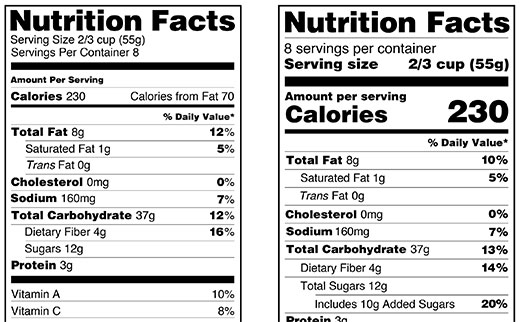

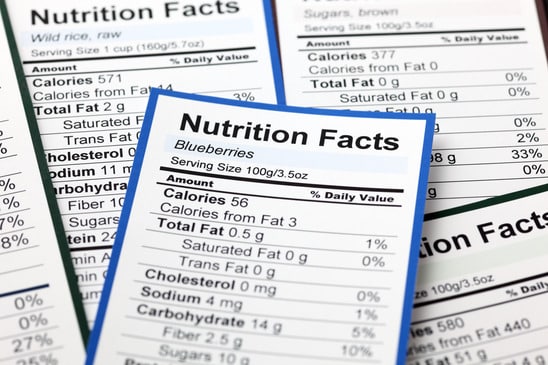

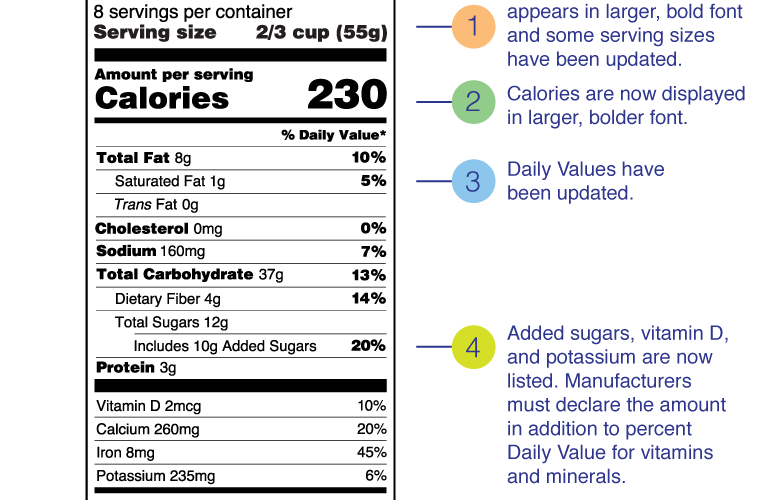
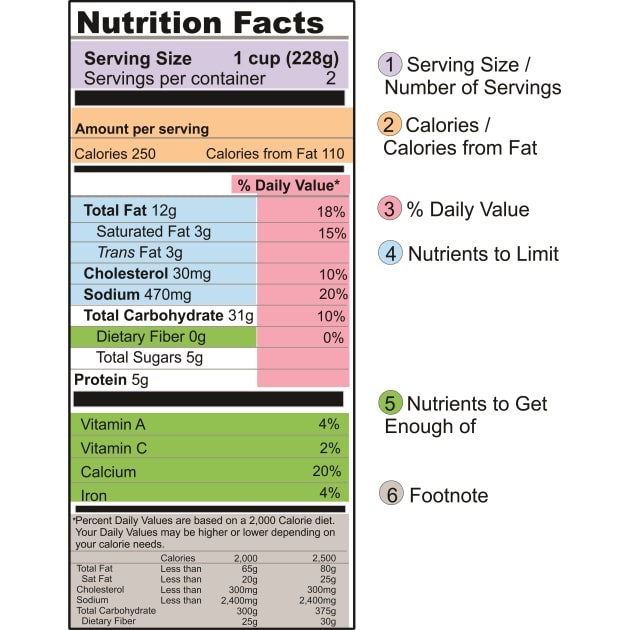

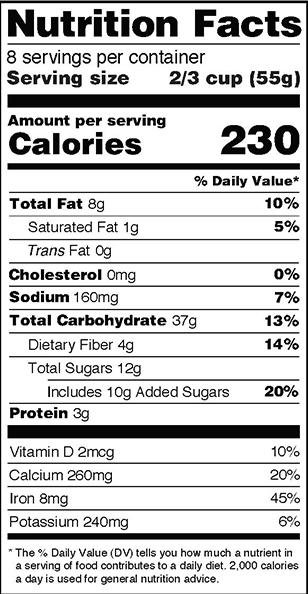



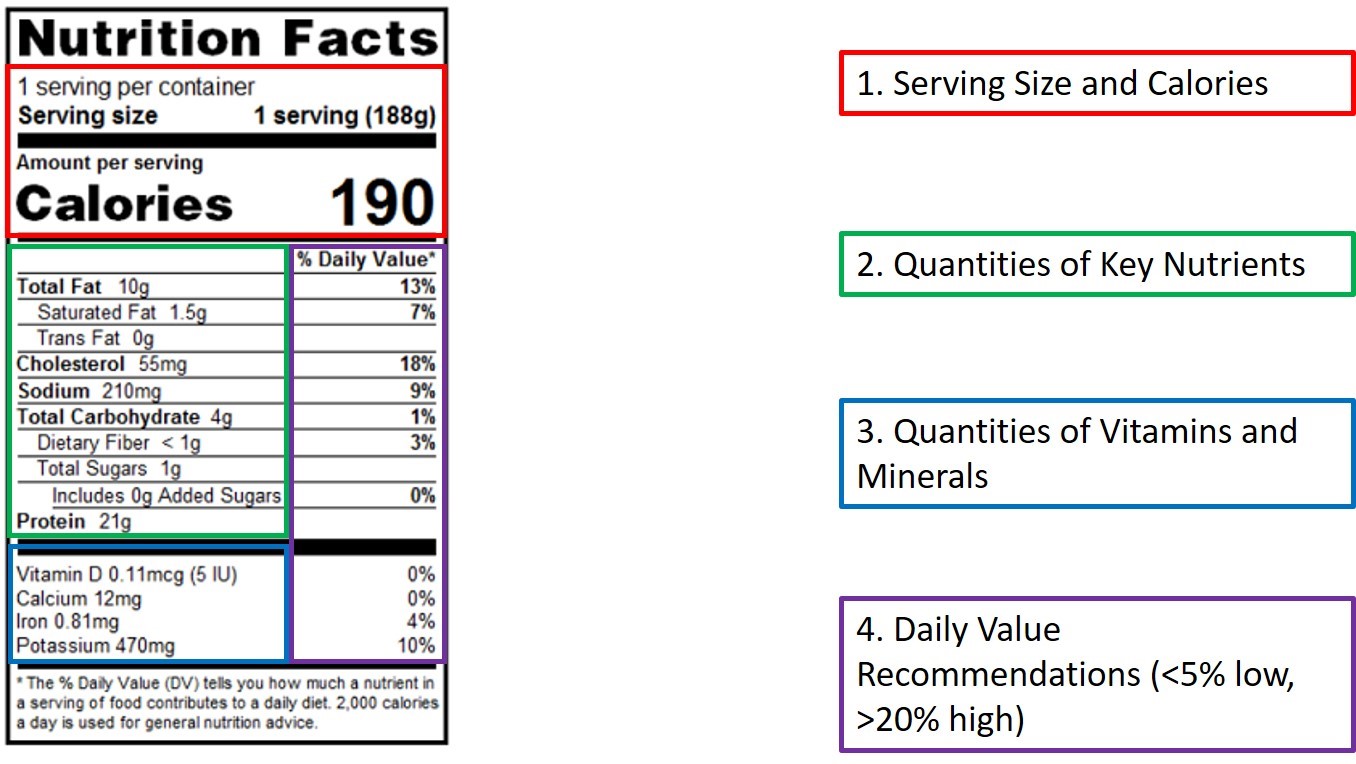

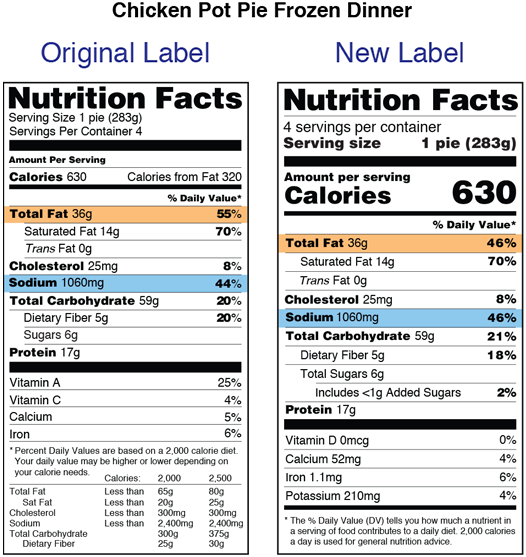

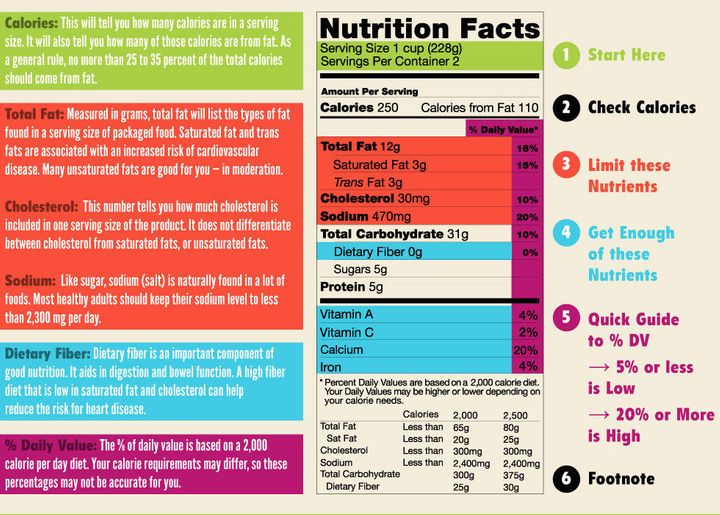

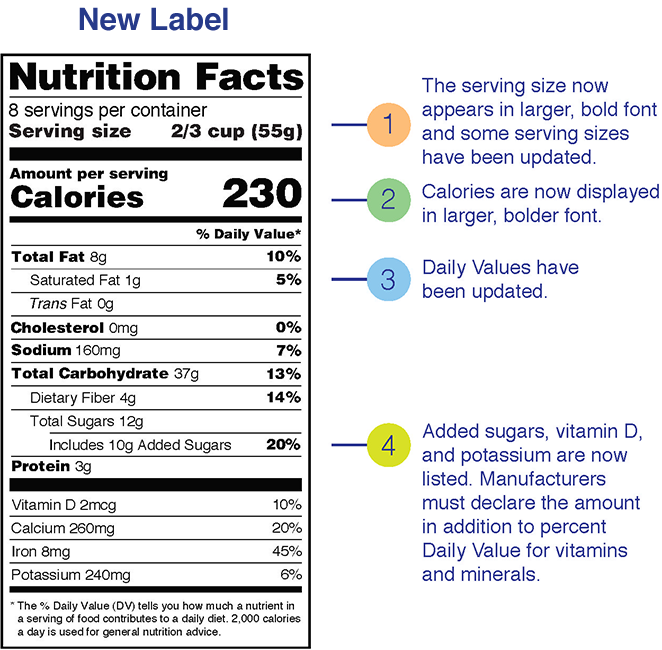



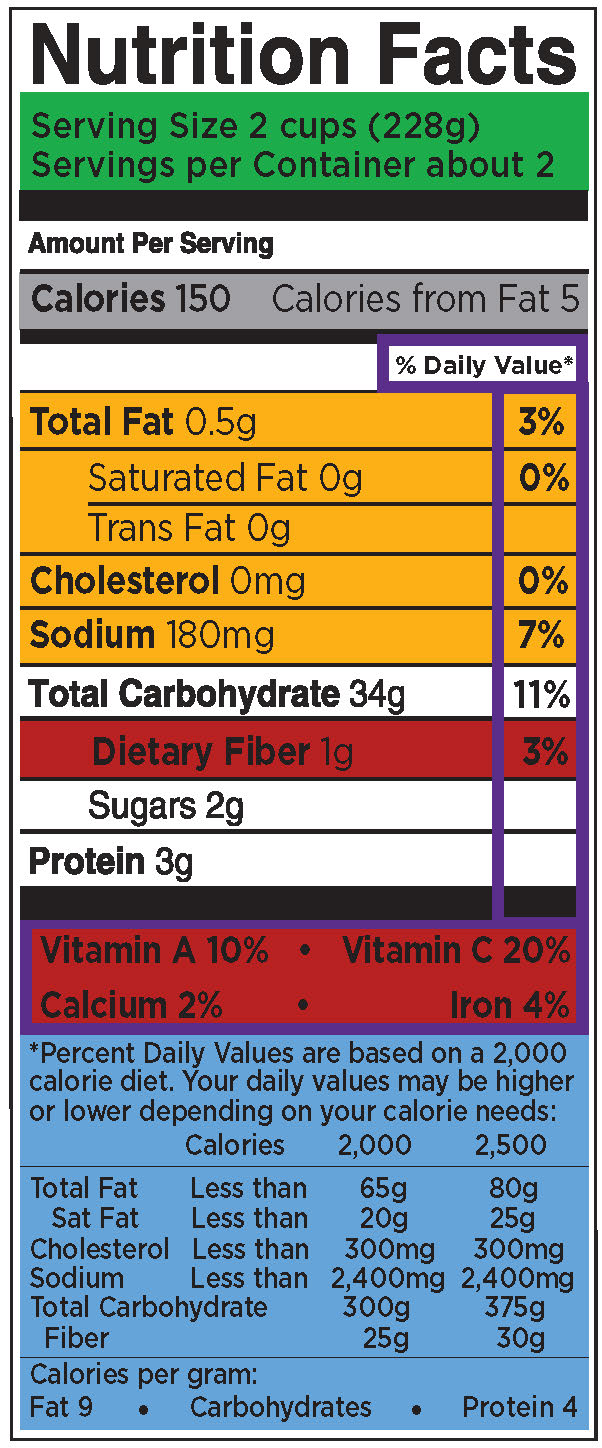
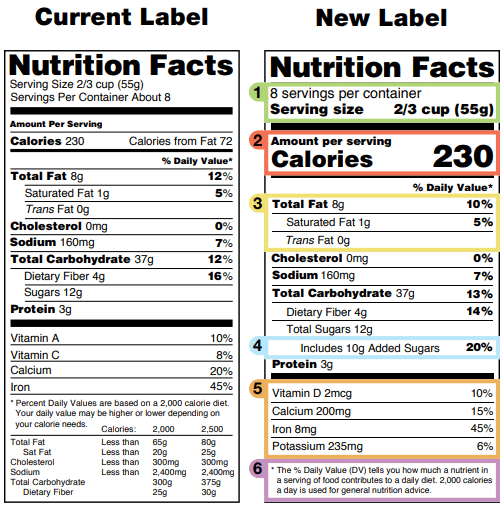




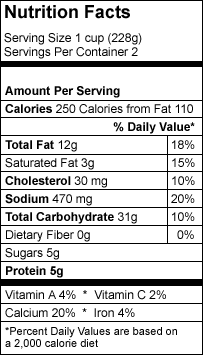




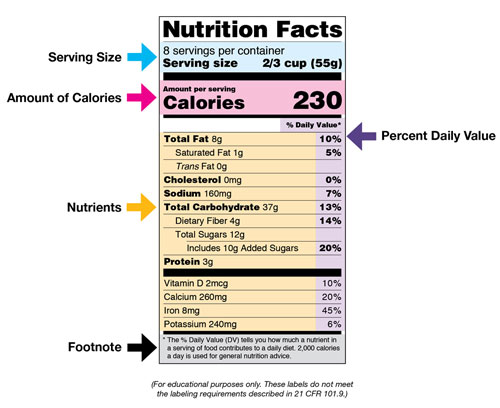





Post a Comment for "45 daily value on food labels"